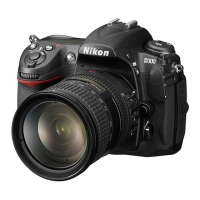But, I have to ask, what is the point of several out-of-focus
images mixed with the in-focus pictures? Why waste the card
space and then have to weed through the slightly out-of-focus
images?
Pay special attention to these two settings. You will need to
decide—based on your style of shooting—whether you want
your camera to refuse to take an out-of-focus image. If you
set a1 and a2 to Focus priority and you try to take an
out-of-focus image, the Shutter-release button will simply not
release the shutter. The green in-focus indicator in the
Viewfinder will have to be on before the shutter will release.
My Recommendation: Personally, I set both a1 and a2 to
Focus priority. I’m not a high-speed shooter, so I don’t need
my camera to take a picture “no matter what” if that includes
a series of out-of-focus images. What good are out-of-focus
images? We’ll discuss this even more in the chapter titled
Chapter 11.
Dynamic AF Area
Custom setting a3 (D300S and D300)
(User’s Manual – D300S page 264; D300 page 269)
Dynamic AF area lets you choose the number of AF points
used when you put your camera in Dynamic-area AF mode.
First, let’s review Dynamic-area AF; then we’ll discuss how a
larger or smaller number of AF points (9, 21, or 51) might
help us with autofocus (see Figure 4-7). Dynamic-area AF
mode works by allowing you to control a single AF point,
using it to initiate good focus. You can move your selected
260

